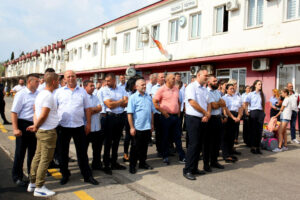
In Montenegro, a group of employees of Željeznička infrastruktura Crne Gore (ŽICG) — more than 80 station attendants and dispatchers — announced a work stoppage, which led to the suspension of several trains at the Podgorica, Bar, and Bijelo Polje, according to the Serbian Economist Telegram channel.
According to the publication, a train traveling from Belgrade to Bar has already been stopped, and a train from Bijelo Polje has not continued its route; some passengers are being transported to their destinations by bus.
A representative of the group of workers, Andrej Kaludjerovic, said that the stoppage was linked to a demand that ŽICG management begin negotiations on raising wages and equalizing pay rates with other railway companies in the country.
According to him, the labor action will continue until management invites employee representatives to the negotiating table with the participation of two representative trade unions, the Ministry of Transport, and the chairman of the company’s board of directors.
Source: Serbian Economist.
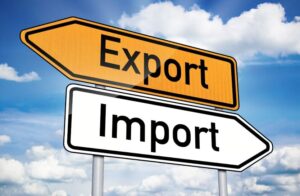
The Experts Club Information and Analytical Center analyzed updated data on Ukraine’s foreign trade volumes for the first half of 2025, published by the State Statistics Service of Ukraine. The analysis is based on official customs statistics and covers 49 of Ukraine’s main trading partners from all continents. The study revealed key trends in foreign economic relations that demonstrate the depth of the country’s international integration.
China remains Ukraine’s largest trading partner, with a total trade volume of nearly US$9 billion. This is more than three times higher than the figures for any individual European country. Poland ranks second with a result of over US$6 billion, demonstrating its stable role as the main European hub for Ukrainian exports and imports. Germany ranks third with a volume of US$4.28 billion.
Turkey ($4.25 billion) and the US ($2.86 billion) also made it into the top five, reflecting the broad geography of Ukraine’s trade relations.
European countries traditionally play a leading role in Ukraine’s foreign trade. Among them, in addition to Poland and Germany, Italy, the Czech Republic, Bulgaria, Hungary, and Romania are worth noting — all of them are among the top 10 partners. High indicators testify not only to the volume of trade, but also to the stability of logistics and production chains in the region.
This also confirms the gradual reformatting of Ukraine’s foreign trade orientation towards EU markets, particularly after the introduction of a duty-free regime, accession to the single customs space, and reorientation from traditional post-Soviet markets.
Among Asian countries, China remains the undisputed leader, retaining its strategic importance as a market for raw materials and a source of industrial imports. Turkey, although part of the Eurasian space, is actively strengthening its position in trade thanks to its flexible policy and developed logistics through the Black Sea.
Among other Asian players, the Republic of Korea, Japan, and India are notable for their presence, gradually increasing trade volumes with Ukraine, especially in the high-tech and pharmaceutical segments.
The United States remains Ukraine’s most important partner in the Western Hemisphere. Despite its geographical distance, the US is among the top five trading partners with a volume of over $2.85 billion. This testifies to deep economic interaction that complements political and defense partnerships.
Brazil and Mexico are also represented in the overall ranking, demonstrating growth in trade volumes, primarily in the agricultural and industrial goods segments.
They are increasingly appearing in Ukraine’s trade balance. In particular, Algeria, Egypt, Tunisia, and Libya show stable demand for Ukrainian grain, metallurgical products, and machine-building products. At the same time, the potential of African markets for Ukrainian exports remains significant and can be realized under conditions of expanded logistics routes and political stability.
Top 10 trading partners of Ukraine in January–June 2025
No. Country Trade volume (USD million)
1 China 8,996
2 Poland 6,043
3 Germany 4,279
4 Turkey 4,249
5 United States 2,859
6 Italy 2,384
7 Czech Republic 1,641
8 Bulgaria 1,539
9 Hungary 1,526
10 Romania 1,499
“The latest foreign trade data demonstrate not only the geographical diversification of Ukraine’s partners, but also a clear focus on integration into the European and global markets. Despite the difficult security situation, Ukrainian business continues to expand into international economic chains, especially in the fields of agricultural products, metallurgy, and machine building. Significant growth in trade with EU countries and the US, as well as strong cooperation with China and Turkey, show that Ukraine has not lost its ability to be an active player in the global market,” says Maxim Urakin, founder of Experts Club and candidate of economic sciences.
Data for the first half of 2025 indicate that Ukraine’s foreign economic relations remain geographically diverse. The EU remains a reliable economic partner, China retains its position as the No. 1 global player, and North American and Asian countries are strengthening their roles. Africa is a promising direction that requires strategic attention.
Analyse, ANALYTICS, ECONOMICS, EXPERTS CLUB, Handel, TRADE, URACIN, URAKIN, WIRTSCHAFT
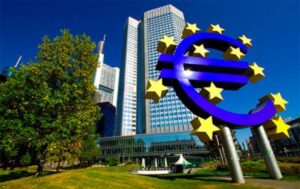
The eurozone economy is likely to slow down in the third quarter of 2025 due to ongoing uncertainty in foreign trade and the winding down of “advance” purchases, European Central Bank President Christine Lagarde said, speaking in Geneva at the World Economic Forum. According to her, in the first half of the year, the region’s export-oriented economy received short-term support from partners replenishing their stocks ahead of the introduction of tariffs in the US, but this factor is “reversing,” and the slowdown was already noticeable in the second quarter.
Lagarde clarified that under the agreement reached between the EU and the US, the “effective average rate” of tariffs on imports from the eurozone is estimated at between 12% and 16%, which is slightly higher than the assumptions of the ECB’s June baseline forecast, but significantly lower than the stress scenario (over 20%). The impact of the deal will be reflected in the ECB’s September macro forecasts, she noted.
According to Eurostat estimates, eurozone GDP grew by only 0.1% q/q in Q2 (after +0.6% in Q1), while July inflation remained at the target 2% year-on-year. Both factors support the scenario of low growth rates with stable “anchor” inflation.
The market as a whole expects the ECB to keep its deposit rate at 2.00%, continuing to assess the impact of tariffs and external conditions on growth prospects. (The meeting schedule is available on the ECB website; the current rate is confirmed by official statistics and national regulators.)
A combination of factors — the receding effect of frontloading, new trade costs (12–16% at the effective average rate) and moderate PMIs — increases the likelihood of a stagnation scenario in the second half of the year: the economy will hover around zero, and growth momentum will depend on the stability of domestic demand and clarity on industry tariffs (pharmaceuticals and semiconductors remain areas of uncertainty).
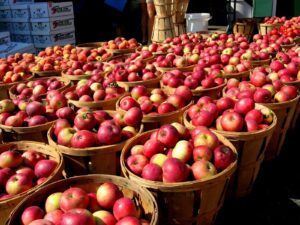
In 2025, a number of European countries are expected to see a significant decline in apple production due to spring frosts, according to Serbian Economist, citing data from the World Apple and Pear Association (WAPA).
According to Serbian Economist, Greece will be hit hardest, with a 51.5% drop in harvest, followed by Romania with 39.5% and Serbia with 26.7% compared to last year. Experts attribute this to unfavorable weather conditions and, in some cases, a reduction in the area of fruit-bearing orchards in these countries.
According to WAPA estimates, total apple production in the European Union in 2025 will be about 10.46 million tons, which is 7.5% below the average for recent years, but almost corresponds to the level of 2024 (-0.1%). The largest decline is expected for Red Delicious (-19.2%) and Idared (-8.8%) varieties, while Golden Delicious volumes will decrease by 0.9% and Gala will remain at last year’s level.
At the same time, production is expected to grow in Austria, the Czech Republic, Poland, and Belgium, which will partially offset the decline in countries most affected by frost.
Source: https://t.me/relocationrs
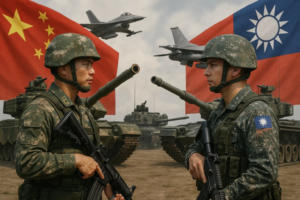
Against the backdrop of ever-increasing tensions in the Taiwan Strait in 2025, China and Taiwan continue their military demonstrations of force. The PRC is conducting exercises near the island, while Taiwan is mobilizing reservists and deepening cooperation with Western partners.
Experts Club offers a comparison of key indicators of the military capabilities of the parties.
Military capabilities of the People’s Republic of China (PRC)
Number of personnel:
2 million active military personnel
510,000 reservists
Over 1 million in the People’s Armed Police Force
Ground forces:
5,250 main battle tanks (Type 99, Type 96)
9,000+ artillery systems, including PCL-191 multiple launch rocket systems
Air Force (PLAAF):
Approximately 3,400 aircraft
1,300+ fighter jets (J-10, J-16, J-20 — 5th generation)
300 strategic bombers (H-6)
Hundreds of strike UAVs
Navy (PLAN):
340+ warships (the largest fleet in the world)
3 aircraft carriers (Liaoning, Shandong, Fujian)
70+ submarines, including 12 nuclear submarines
Latest Type 055 missile destroyers
Nuclear arsenal:
410–500 warheads (according to SIPRI estimates)
Active expansion of missile arsenal: DF-31AG, DF-41
Air, sea, and land delivery platforms
Technological achievements:
Development of DF-ZF hypersonic missiles
Cyber forces and space forces
Own satellite navigation system BeiDou
Military potential of Taiwan (Republic of China)
Number of personnel:
170,000 active military personnel
Up to 1.5 million reservists
Army:
1,000 battle tanks (M60A3, CM11, M1A2T)
2,200 artillery systems (including HIMARS, M109)
Air Force (RoCAF):
500 aircraft
180 F-16V, Mirage 2000-5, IDF Ching-Kuo fighter jets
Modern air defense systems: Patriot PAC-3, Sky Bow III
Navy:
26 combat ships
4 submarines (including new domestic Hai Kun)
New Tuo Chiang class corvettes
Nuclear doctrine:
Taiwan does not have nuclear weapons.
Cyber security forces and latest purchases:
Continuous modernization with support from the US
Purchases of F-16V, Harpoon missiles, HIMARS systems
Strengthening defense based on the concept of “asymmetric strategy”
Despite China’s military superiority, Taiwan enjoys support from:
The US (Taiwan Relations Act, $20 billion in arms supplies)
Japan (strategic cooperation)
Canada, Australia, the United Kingdom (political support, military exercises)
The EU does not officially recognize Taiwan, but is developing trade and exchanges.
As of 2025, only 10 countries officially recognize Taiwan as an independent state:
Belize
Haiti
Marshall Islands
Nauru
Palau
Saint Vincent and the Grenadines
Saint Lucia
Swaziland (Eswatini)
Tuvalu
Paraguay
Although China has an unquestionable military advantage over Taiwan, the latter is relying on defense modernization, mobilization potential, support from allies, and the development of asymmetric strategies.
The conflict over Taiwan poses global risks to stability in the Asia-Pacific region and around the world.
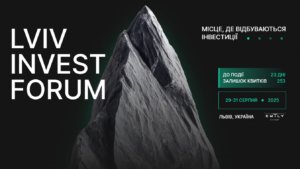
August 29–31, 2025 — Lviv will host Lviv Invest Forum 2025, one of the key investment events of the year.
The forum will bring together over 1,000 participants, investors, entrepreneurs, government officials, and international partners to discuss the most pressing challenges and opportunities for investing in Ukraine.
Focus 2025: “Invest wisely. Grow with the community.”
This year’s theme is conscious investment and sustainable private capital development.
This is not just an event, but a living platform for networking, launching joint projects, and strategic dialogue between business, government, and investors.
What can you expect?
Speakers include:
Organizers and partners
The forum is organized by the Lviv Invest Forum team in partnership with leading Ukrainian businesses.
General partner:
Resident Development — a development company that has been transforming the urban environment of Lviv for nine years, combining comfort, quality, and investment attractiveness.
Partners include: Bentley, MHP, Photomate, Spatium, Arha Group, and dozens of other companies.
Partner hotels:
Emily Resort, Grand Hotel Lviv, City Inn Lviv, and Citadel Gastro Boutique Hotel — special accommodation conditions for participants (discounts up to 15% with the promo code LIF2025).
Who is this forum for:
Details and participation
Official registration: https://lviv-invest.com
Dates: August 29–31, 2025
Locations: Emily Resort, Lviv. (Day 3 – Derevach village)
Contact for media and partnerships: lviv.invest.forum@gmail.com
Lviv Invest Forum 2025 is a place where business finds partners and investments find meaning. Join us to be at the center of the new economy.